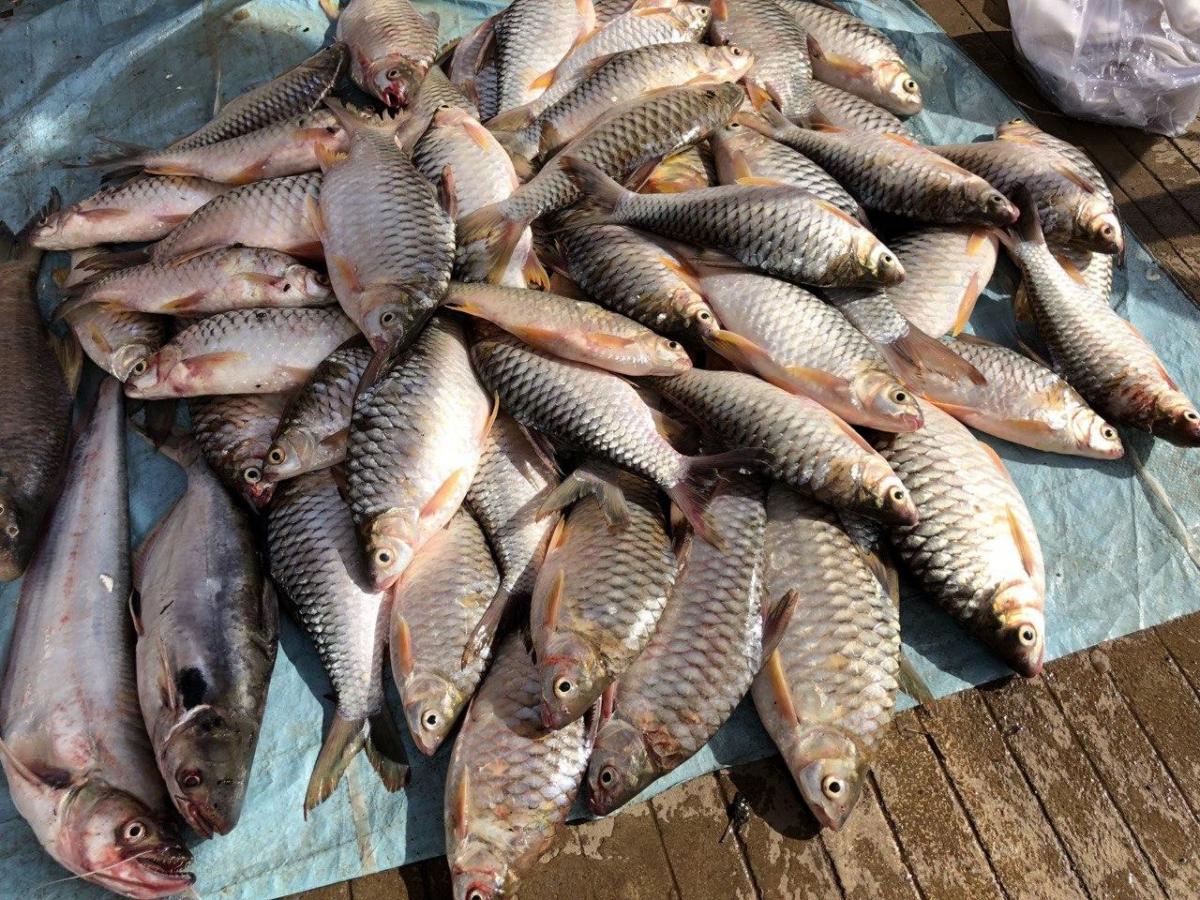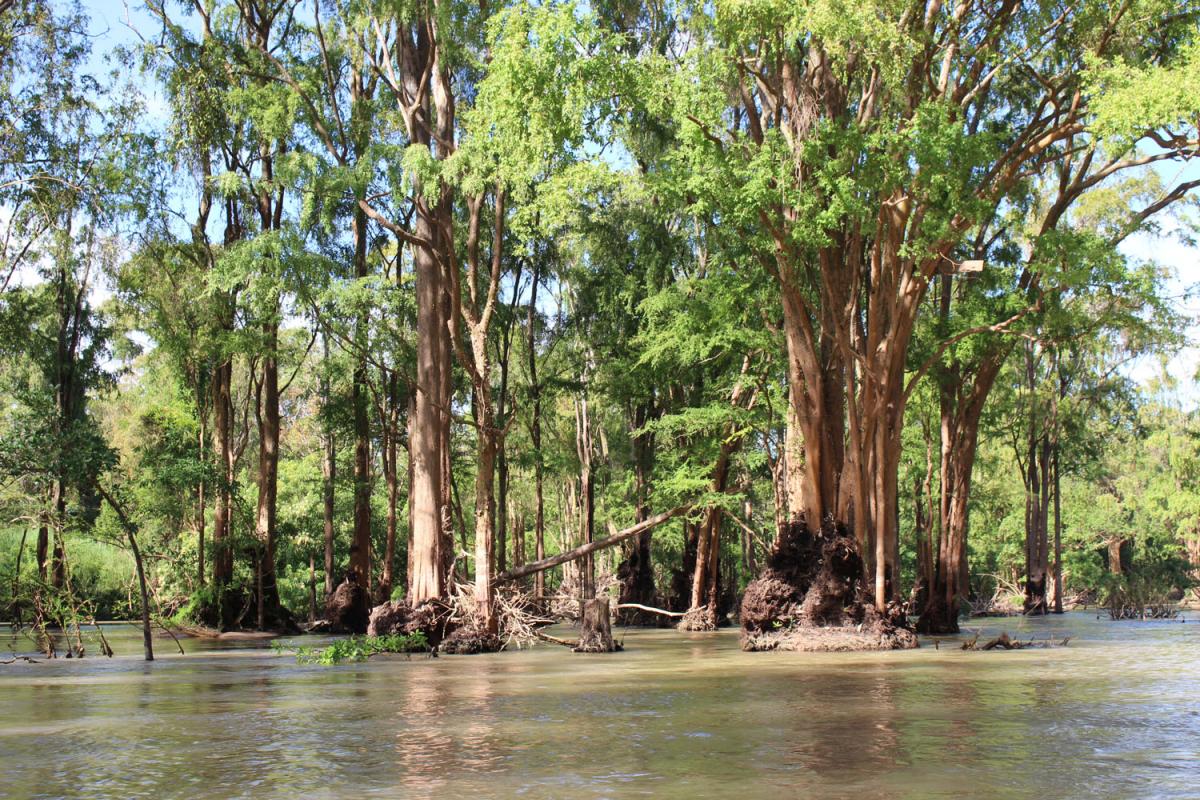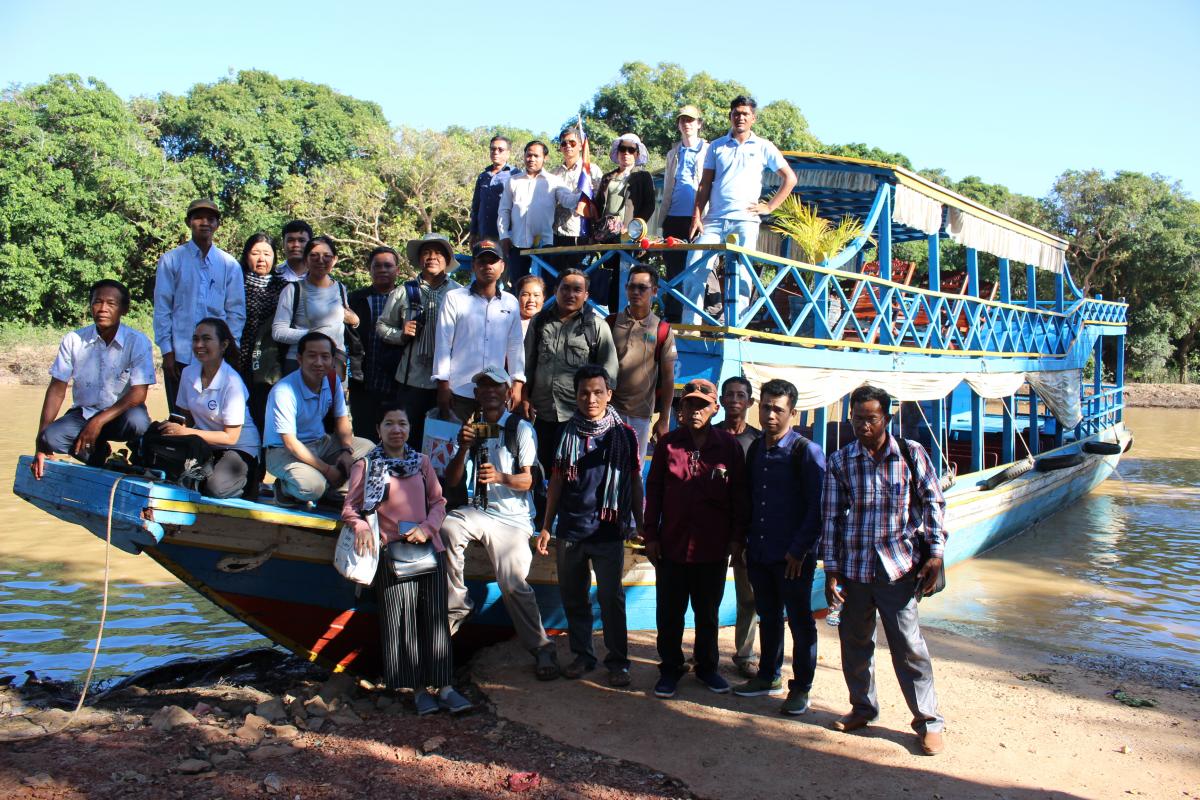Protecting Fish Broodstock in Stung Treng Province
The stretch of the Mekong that passes through Stung Treng Province is abundant in deep pools, rapids, rocky and sandy islands, and inundated forests, which provide vital habitats for broodstock or “mother fish”.
Mother fish breed in March and April and spawn in mid-to late May. Eggs and larvae drift downriver and enter the Tonle Sap where they mature. To protect spawning, the Fisheries Law mandates a 4-month closed season from June 1 to September 30, which is respected. But May is actually more important for mother fish conservation.
According to Sareth, Chief of Anloung Koh Kang Community Fisheries in Stung Treng and an experienced fisher: “Some fish species start breeding in March and April in Kratie and migrate to Stung Treng to spawn in the rapids, flooded forests, and deep pools in May and June. One month before the closed season, starting May 1, is a good time for fish to spawn because there is no disturbance from fishers. The May closure has impacted local fishers, many of whom have started farming vegetables, raising cattle and poultry, and working for wage labor.”
In practice, fishers tried to catch as many broodstock as possible in May before the closed season started, which is why the government decided to bring forward the start of the closed season to May 1.
Starting in 2019, with the support of national and provincial authorities, Stung Treng was the first province to implement a closed fishing season from May 1 to September 30. 2020 is the second year of this extended closed season.
Tum Nyro, Chief of Stung Treng Fisheries Administration (FiA) said: “Stung Treng is a role model for fisheries conservation. To sustained our fish resources for the next generation, we have to change our current practices and this requires the full participation from all stakeholders including private sector and media.” He acknowledged that starting the closed season on May 1 has had a minor impact on local fishers but if we consider the long-term benefits, they will be substantial.
In response to the earlier start of the closed season, fish catch in May 2018 and May 2019 declined from 1,000 to 90 tons. Based on direct market observations in Stung Treng alone, up to 450 tons of fish were sold in May 2018, mostly broodstock species, but in May 2019 after the earlier start, only 18 tons were sold, a 96% of decline.
The FiA believes that it will take 2-3 years to understand the long-term impact in terms of changes in fish stock, diversity and value. In late 2020, the FiA will conduct research to assess fish catch, including catch per unit effort, and local perceptions of the longer closed season after the fishing season restarts in October.
Since 2019, with funding from IUCN NL SRJS and KfW, IUCN and CEPA have established four trust funds in Stung Treng, each with a capital of $5,000 deposited in a local bank. This generates about $35/month in interest, which has been used to leverage additional income from savings groups, membership fees, etc. and strengthen the autonomy of fishing communities.
In 2020, SDC’s Partnership for Forestry and Fisheries (PaFF) will establish four more community fisheries managed trust funds, bringing the total number to eight. The rules and regulations for these new trust funds will prioritize the protection of fish conservation areas and cooperation with FiA to protect broodstock during the 5-month closed season.







